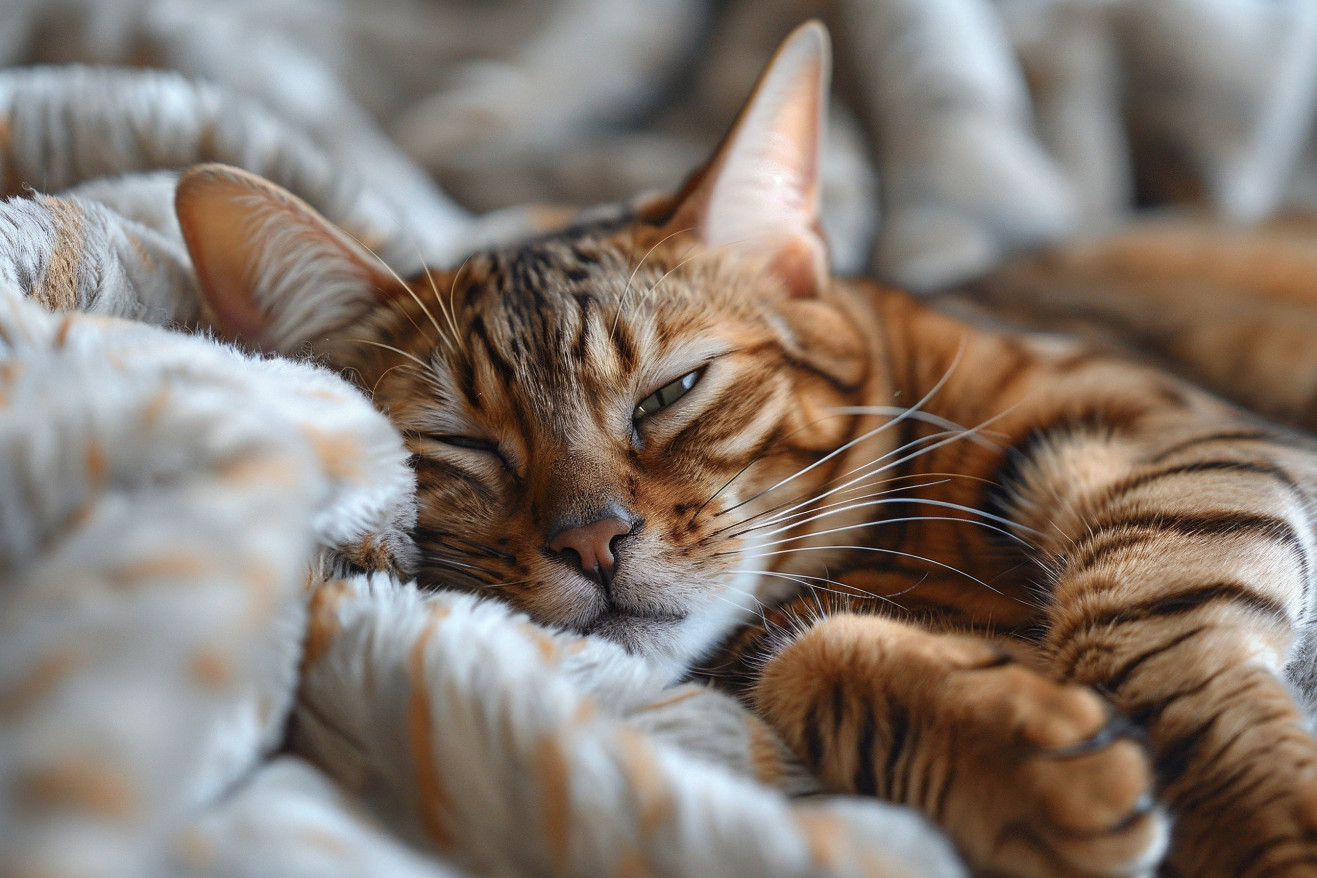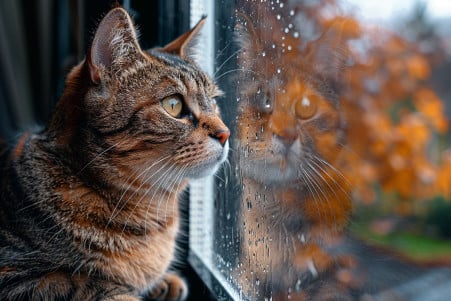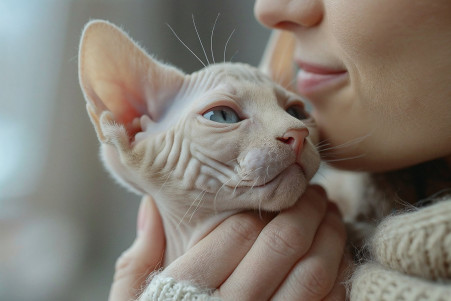Do Bengal Cats Cause Allergies? The Science of Hypoallergenic Cats
21 March 2024 • Updated 21 March 2024

Known for their beautiful coats and friendly dispositions, Bengal cats are a popular choice for many pet owners, but what about their potential to cause allergies? The simple answer is that no, Bengal cats are not hypoallergenic. Although their short fur means they produce less of the Fel d1 protein that causes cat allergies than other breeds, they still produce enough that people with severe allergies will likely react.
To get a better understanding of this issue, we will look at the scientific research on Bengal cat allergen levels and referencing veterinarians and other cat professionals on how to deal with allergies when you have a Bengal cat. By learning about the science that supports—and refutes—the idea that Bengal cats are hypoallergenic and hearing from cat owners about their real-life experiences, you can decide whether or not to bring a Bengal cat into your home if you or someone in your family has allergies.
Are Bengal cats hypoallergenic?
What Causes Cat Allergies? Symptoms, and Triggers
Cat allergies are caused by a protein called Fel d 1, which is present in cat saliva, dander (dead skin cells), and urine. Cat allergy symptoms include sneezing, itchy eyes, runny nose, and difficulty breathing. Although cat hair is not an allergen, dander and saliva proteins can be released into the air and cause allergic reactions in homes without cats.
Sensitivity to cat allergens can vary widely, with some people experiencing only mild symptoms and others experiencing more severe ones. Gender, age, and grooming frequency can all affect the amount of Fel d 1 that a cat produces. Grooming increases the amount of saliva proteins that a cat deposits on its fur, which in turn increases the amount of allergens present.
While no cat is completely hypoallergenic, some breeds like Bengals are known to produce less Fel d 1 because of their short, low-shedding coats. However, as WebMD notes, so-called "hypoallergenic" cats are not guaranteed to be less likely to cause allergic reactions in people with allergies. With the right precautions, some people with allergies may be able to live with certain cats more comfortably than others.
Bengal Cats: Physical and Temperamental Traits and Allergies
Bengal cats are a relatively new and rare breed that originated from the hybridization of domestic cats with the wild Asian leopard cat (Prionailurus bengalensis). According to The Spruce Pets, this crossbreeding produced a medium-sized, muscular cat with a coat that can be spotted or marbled. Bengal cats are known for their beautiful, distinctive markings and typically weigh between 8-15 pounds. They also have a short, sleek coat that is soft to the touch.
In addition to their good looks, Bengal cats are also known for their active, intelligent nature. Daily Paws calls them "gregarious" and "affectionate" and says they often bond most closely with one person in the household. Their high energy and intelligence also make them a breed that needs lots of mental stimulation, and they can be trained to do everything from playing games to walking on a leash.
While Bengal cats aren't hypoallergenic, Green Matters says that they may produce fewer allergens than other cats, making them a better option for some people with allergies. This is because they have shorter coats that shed less and produce less of the Fel d 1 protein that causes allergic reactions. However, Untamed Cat Food warns that no cat is completely allergen-free, and people's reactions to individual cats can vary.
Coping With Allergies: Tips for Living With a Bengal Cat
If you have cat allergies, it’s important to talk to an allergist or other medical professional before bringing a Bengal cat into your home. The Cat Clinic at Cherry Hill notes that even people with mild allergies can often control their symptoms enough to live with a cat if they take the right precautions.
One of the most important steps is to create allergy-free areas in the home, like making sure the Bengal cat isn’t allowed in the bedroom or on the furniture. Catster also recommends cleaning and dusting regularly, using a vacuum with a HEPA filter, and using air purifiers to help reduce airborne allergens. Bathing and grooming the cat regularly, ideally by someone who isn’t allergic, can also help reduce shedding and dander.
In addition, Medium explains that dietary changes, like feeding the cat a high-quality, high-protein diet, can help improve the cat’s skin and coat health, which may reduce the overall amount of allergens the cat produces. However, with the right interventions, many people with allergies can live with a Bengal cat.
Minimizing Allergens in the Home
Minimizing allergens in the home is especially important for people with allergies to Bengal cats. The Asthma and Allergy Foundation of America (AAFA) notes that cleaning and vacuuming can help get rid of cat dander and other allergens on surfaces and in carpets. A vacuum with a HEPA filter is best for removing airborne particles.
The FLONASE website also recommends using HEPA air filters and purifiers to help clean the air in your home. Regularly washing bedding, furniture, and other fabrics can also help keep allergens at bay. It's also a good idea to choose furniture and flooring made from materials that are easy to clean, such as wood, leather, or vinyl, to help reduce the number of places where allergens can collect.
In addition, GEARS suggests using special cat litters or litter box deodorizers to help reduce allergens from cat urine. These measures can help you keep your home as allergen-free as possible and reduce your allergy symptoms when you live with a Bengal cat.
Taking Personal Factors Into Account and Seeking Medical Help
The level of sensitivity to cat allergens can be highly individual, even among people who have been diagnosed with cat allergies. The Bengal Connection notes that the only way to know for sure if you will be allergic to a Bengal cat is to spend time with one before you bring it home. This way, you can determine your own reaction and decide if it's something you can live with.
It’s also important to talk to an allergist or immunologist. Litter-Robot says that these medical professionals can help you understand your specific allergies and how severe your reactions are. They can also help you figure out if you should get tested for allergies and if there are any immunotherapy options that could help you live with a Bengal cat.
In the end, it’s important to make sure you are fully informed about the potential risks and benefits of bringing a Bengal cat into your home if you have allergies. The Bengal Connection stresses the importance of being willing to take the necessary steps to protect yourself, like creating allergen-free areas in your home, or seeking medical help if necessary. With the right precautions and help from a medical professional, some people with allergies may be able to enjoy the company of a Bengal cat.
Conclusion: Balancing the Pros and Cons of Owning an Allergy-Friendly Bengal Cat
Although Bengal cats are often considered more hypoallergenic than other breeds, it’s important to remember that no cat is completely allergen-free. The primary cat allergen, Fel d 1, is still present in Bengal cats, although it is less than in other breeds due to their short, single-layered coats and minimal shedding.
As Untamed Cat Food explains, Bengal cats are "less likely to cause allergies than other breeds like Maine Coons, Persians, and Norwegian Forest cats, but they are not considered fully hypoallergenic." The Royal Bengal Cattery adds that "there really are no domestic cats that are 100% hypoallergenic" because all cats produce dander and allergens to some extent.
That said, people with mild cat allergies may find that they can tolerate a Bengal cat. Catster suggests that people living with a Bengal cat can reduce their exposure to allergens by cleaning their homes regularly, using air purifiers, and grooming their cats properly. The Cat Clinic at Cherry Hill also points out that many people with mild allergies can live with a cat if they take the right precautions.
In the end, the decision to get a Bengal cat when you have allergies is a personal one that requires a lot of thought. It’s important to talk to an allergist, spend time with the specific cat you’re considering adopting, and be willing to take steps to reduce your exposure to allergens. If you’re willing to do that, you may find that you can live with a Bengal cat.


